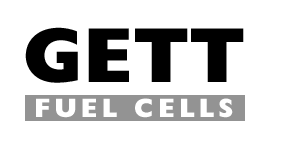The Newletters for 2018
source:Bin Zhu clicks: pubdate:2018-02-01
HERE COMES AN EDITION for discussion: It came to me suddenly that we were only now beginning to touch the tip of the iceberg which touches the real physical world and the physical sciences, Electronionics: We know that the physical world is a kingdom of electrons and ions. Leaving one is not. This is a phenomenon and a law of electron-ion composition, by which reference is made to the existing classification of the electronic sciences and of the material physics. Two major sub-disciplines of Semiconductor-Ionics and Insulator-Ionics (a large number of Insulators and heterostructure materials have demonstrated good ionic conductivity and fuel cell performances) may be derived. Further derivations may be of: Dielectrionics, Ferroelectrionics, Piezoelectrionics, Magneto-Ionics, Ferromagentionics, Topoionics (to “topological materials”) and so on. So the existing scientific knowledge of electronics can combine the ion phenomenon to study the new science of the material world, while the independent electronic or ionic sciences are incomplete. This is why electron and semiconductor science and devices now obliged to study the effects of ions and their effects on electron transport, thus Iontronics is proposed, and we must propose “Electronionics” and Semiconductor-ionics. “Electronionics” and “Iontronics” are two sides of the physical laws of the real world, just like that the microworld must introduce wave-particle two-phase property to describe the movement of micro-particles. In this way, we indeed need very much widely international and domestic cooperation and resources, establish a Scientific fate community, and cooperate to develop win-win cooperation and sharing with joint efforts. Only then can we really do a decent first-class scientific research, I hope this perspective and immature point of view can become a research guideline, ideology and direction after our critical thinking and discussion as well as criticism.
我突然发现我们研究到现在才刚刚懵懵懂懂触摸到真正物质世界和物理科学的冰山一角,就是电子离子学(Electronionics):我们知道物质世界是由电子和离子构成的王国,离开一个都不是成。这是一个电子-离子组成的现象和规律,由此参照已有的电子科学和材料物理的划分,延伸或衍生出半导体离子学和绝缘体离子学(Insulator-ionics)(大量的绝缘体材料和异质结构材料已经彰显良好的离子导电和燃料电池性能)两大子学科,再衍生 介电离子学(Dielectrionics), 铁电离子学(Ferroelectrionics),压电离子学(Piezoionics),磁离子学(Magenetionics),铁磁离子学(Ferromagetionics)等等,所以已有的电子科学知识可以结合离子现象来研究物质世界真正的科学规律,而各自独立的电子科学和离子学是不全面或不完整的科学。这就是为什么现在电子和半导体科学与器件不得不大量研究离子的效应以及对电子运动规律的影响,由此产生或提出离子电子学(Iontronics),而我们必须提出电子离子学和半导体离子学。而电子离子学和离子电子学对物质世界物理规律表现的两面就像微观世界必须引进波粒两相性才能描述微观粒子的运动规律一样。如此,我们太需要国际国内的合作和资源了,建立科学研究的命运共同体,合作发展共赢共享。才是也才能真正做像样的一流科学研究,希望这个视野和不成熟的观点经过大家的思考和讨论能够成为一个研究指导思想及方向。


















